Photos: Europe's ExoMars Missions to Mars in Pictures
ExoMars 2016 Mission
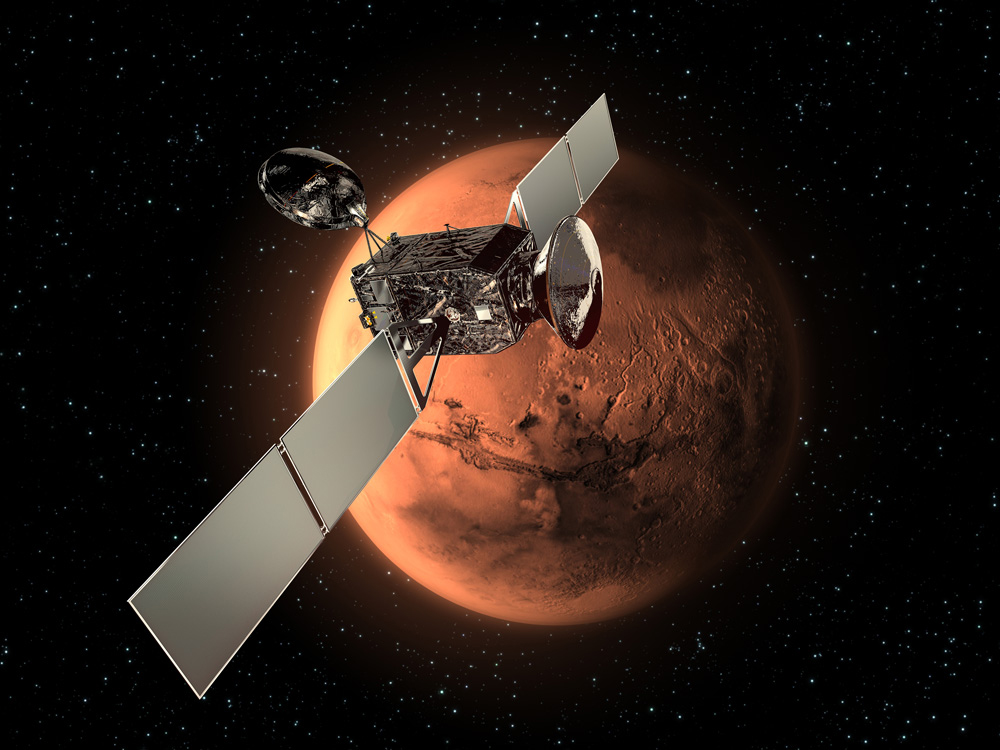
The ExoMars Trace Gas Orbiter (TGO), along with an Entry, Descent and Landing Demonstrator Module (EDM), form the first mission in the ESA-NASA ExoMars Program. The Orbiter and EDM are scheduled to arrive at Mars in 2016. This image shows the Orbiter and the EDM in cruise configuration. Image released Nov. 1, 2010.
ExoMars 2016: The Trace Gas Orbiter and Entry, Descent and Landing Demonstrator Module
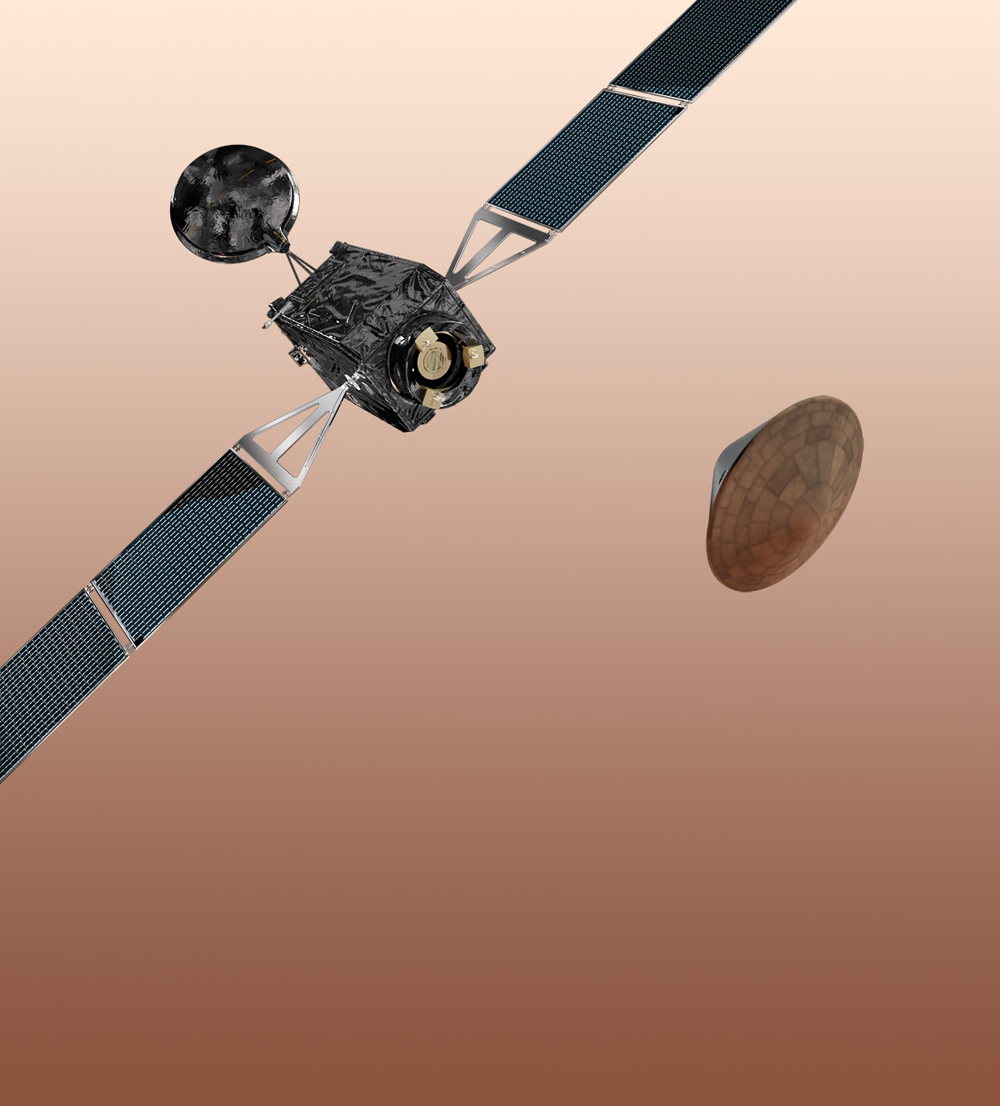
Artist's concept of the ExoMars 2016 spacecraft, which consists of the Trace Gas Orbiter and the Entry, Descent and Landing Demonstrator Module (EDM).
WISDOM Prototype Field Test
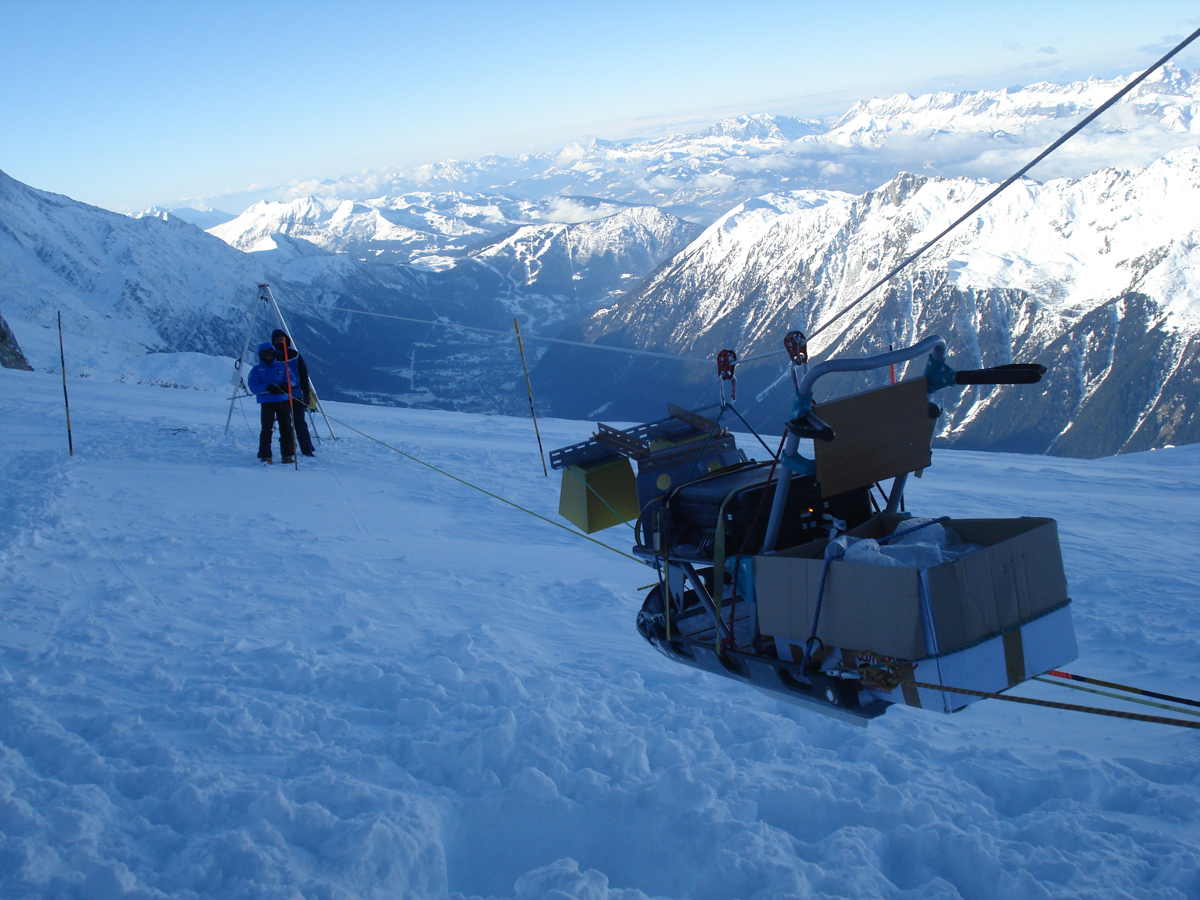
WISDOM (Water Ice and Subsurface Deposit Observation on Mars) is a subsurface sounding radar, and forms part of the ExoMars rover instrument suite. WISDOM will provide a detailed view of the structure of the subsurface of the Red Planet by studying the upper layers of the Martian crust. An instrument prototype, representative in terms of design, size, mass and power, has been developed. A field test was performed, on a glacier in the French Alps near Chamonix in January 2011. The prototype carried out measurements down to more than 15 meters and detected structures with deep cracks. The prototype was installed on a zip-line to study the functionality of the antennas on a height (approximately 65 cm); this mimics WISDOM's situation on the ExoMars rover. The WISDOM antennas are the yellow items and the radar is situated inside the white box. Image updated June 27, 2011.
ExoMars Rover Prototype
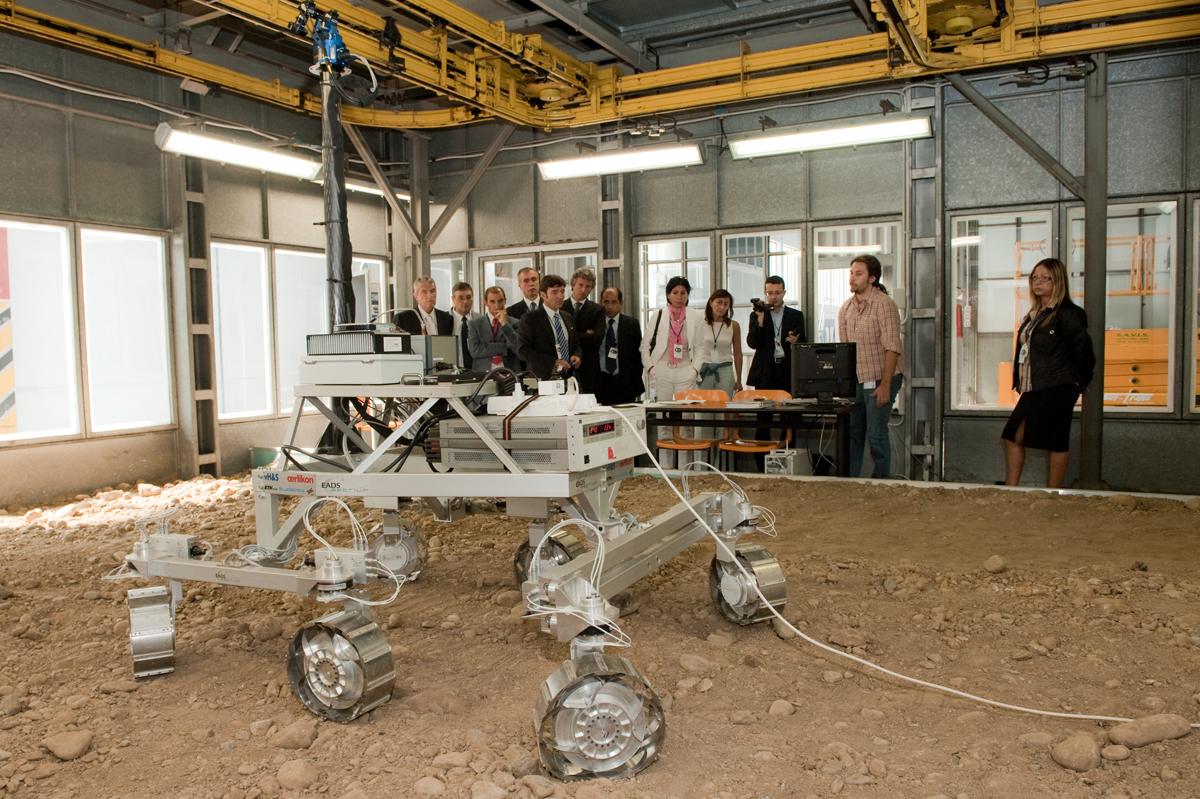
The photo shows the ExoMars Rover prototype demonstrated during the 2nd ExoMars Industry Day on September 23, 2010 in Turin, Italy. The purpose of the event was to provide a forum to discuss the progress of the ExoMars program as well as to explore its programmatic and technological challenges.
Europe’s ExoMars Rover: Steering a Course Toward Humans on Mars
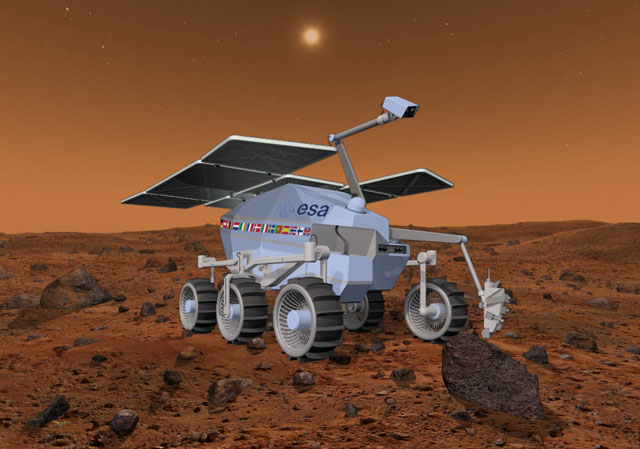
The European Space Agency’s ExoMars rover is due to launch toward the Red Planet in 2018. In this artist’s view, note the ExoMars robotic arm and drill.
ExoMars Rover Mock-up
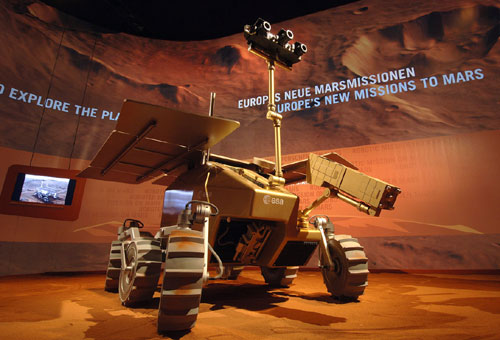
A mock-up of the European Space Agency's planned ExoMars rover.
EDM Parachute System Tests
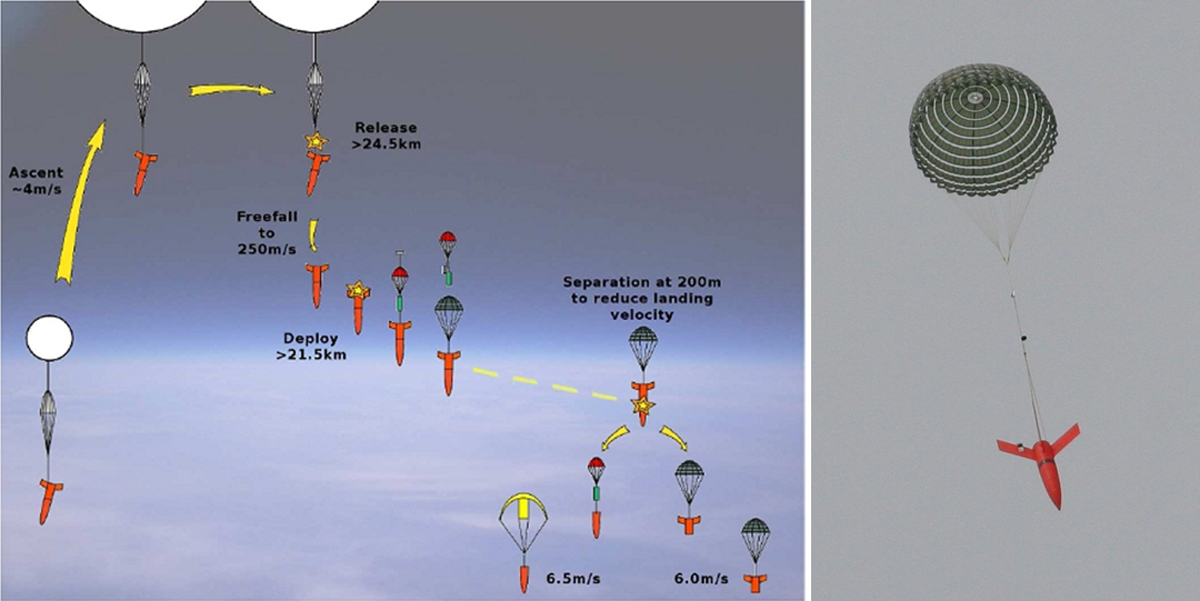
To the left is a schematic representation of a sub-scale high altitude drop test. The balloon ascends to a test altitude of roughly 24.5 kilometers, after which a drop sequence is initiated via a radio uplink command. The EDM is then released from the balloon with a pyrotechnic device and experiences free-fall for 23 seconds. Following this, a test parachute is deployed with a pilot parachute. At 200 m (or at an altitude determined by uplink command), the EDM separates and the two stages land separately, reducing the impact at landing. The image to the right shows the balloon and the rocket-shaped test vehicle during a sub-scale parachute high altitude drop test in the UK, in early 2011. Image released Sep. 14, 2012.
Breaking space news, the latest updates on rocket launches, skywatching events and more!
ExoMars Dosing Station Prototype
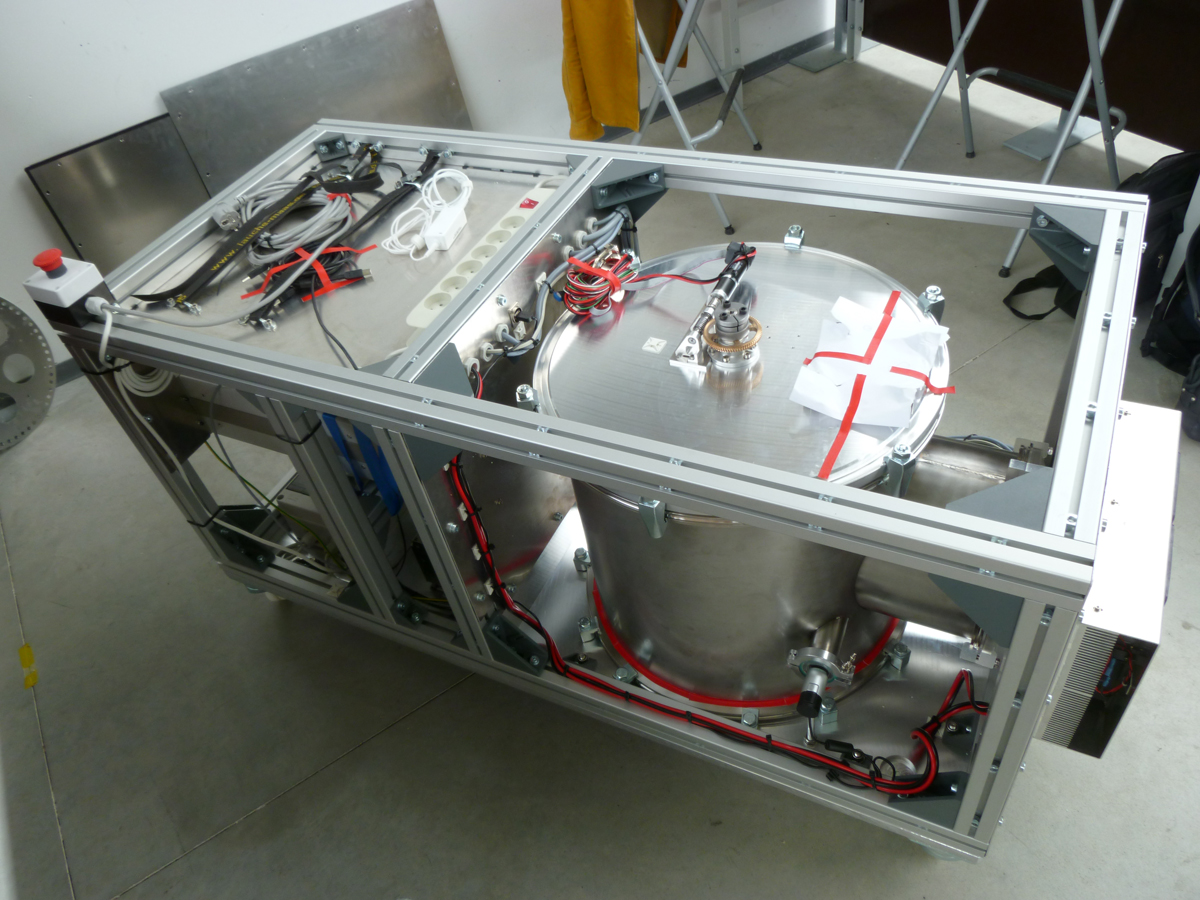
The ExoMars dosing station, a part of the Sample Preparation and Distribution System (SPDS) which is designed to transport Martian soil samples collected by the drill to the instruments inside the ExoMars rover, was tested in conditions simulating Martian gravity during a parabolic flight campaign that ran from June 7- 9, 2011. This photograph shows the vacuum chamber containing the ExoMars dosing station prototype in the Novespace laboratory facilities in Bordeaux, France during the preparations for this parabolic flight campaign.
Proposed Landing Site for the 2016 ExoMars Mission
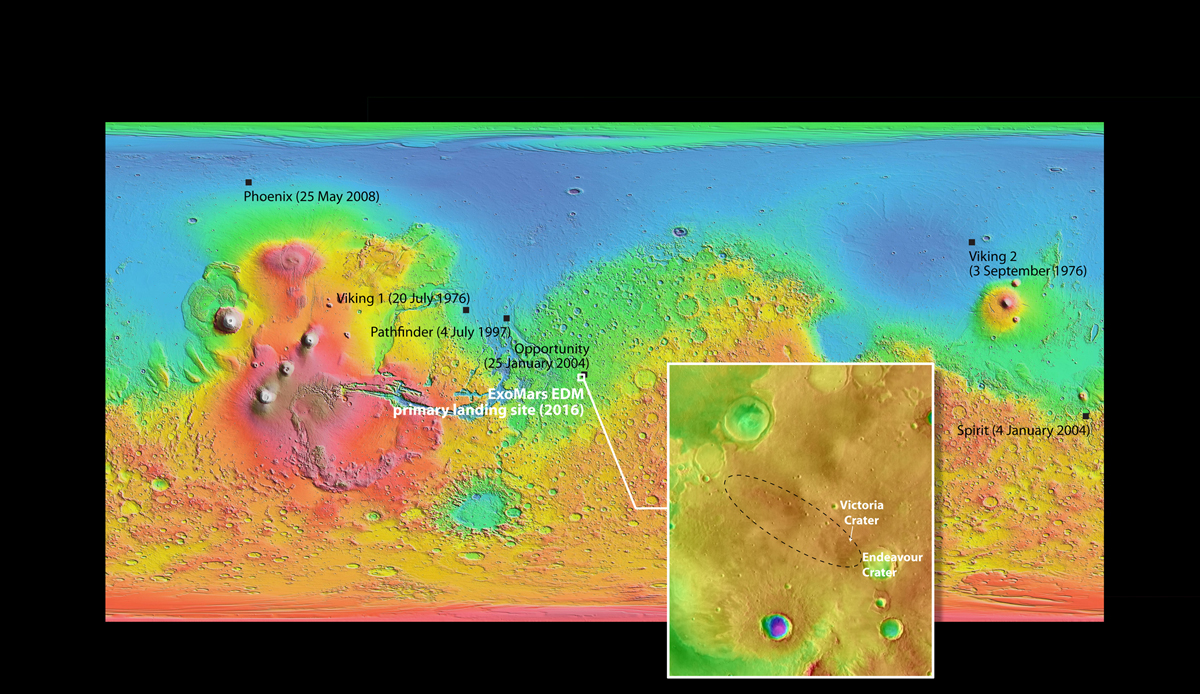
ESA has identified Meridiani Planum as the primary landing site for the ExoMars Entry, Descent and Landing Demonstrator Module (EDM). The EDM is scheduled for launch in January 2016, arriving at the Red Planet approximately nine months later. Image updated June 6, 2011.
Earth Set to Invade Mars
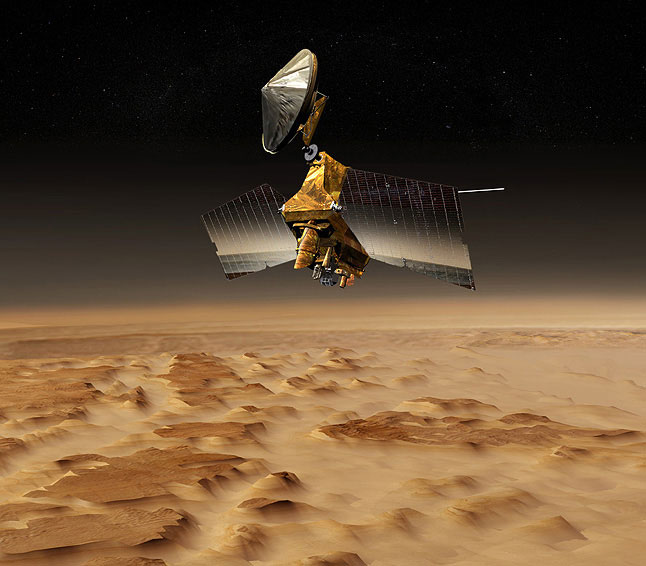
The Mars Reconnaissance Orbiter is helping to plan landing sites for ExoMars and other Mars missions.
Join our Space Forums to keep talking space on the latest missions, night sky and more! And if you have a news tip, correction or comment, let us know at: community@space.com.

Space.com is the premier source of space exploration, innovation and astronomy news, chronicling (and celebrating) humanity's ongoing expansion across the final frontier. Originally founded in 1999, Space.com is, and always has been, the passion of writers and editors who are space fans and also trained journalists. Our current news team consists of Editor-in-Chief Tariq Malik; Editor Hanneke Weitering, Senior Space Writer Mike Wall; Senior Writer Meghan Bartels; Senior Writer Chelsea Gohd, Senior Writer Tereza Pultarova and Staff Writer Alexander Cox, focusing on e-commerce. Senior Producer Steve Spaleta oversees our space videos, with Diana Whitcroft as our Social Media Editor.
